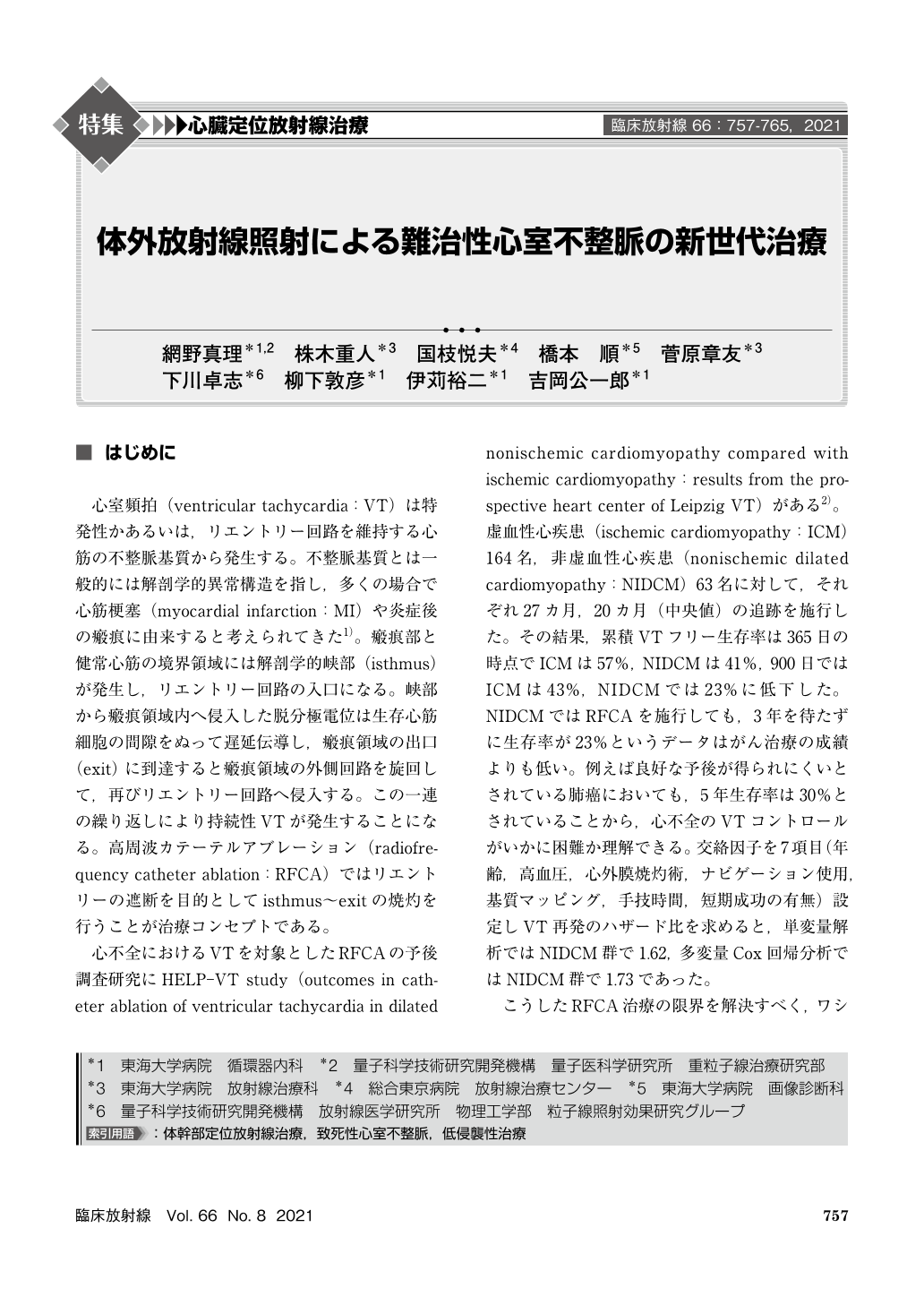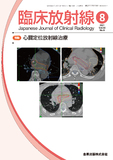Japanese
English
- 有料閲覧
- Abstract 文献概要
- 1ページ目 Look Inside
- 参考文献 Reference
心室頻拍(ventricular tachycardia:VT)は特発性かあるいは,リエントリー回路を維持する心筋の不整脈基質から発生する。不整脈基質とは一般的には解剖学的異常構造を指し,多くの場合で心筋梗塞(myocardial infarction:MI)や炎症後の瘢痕に由来すると考えられてきた1)。瘢痕部と健常心筋の境界領域には解剖学的峡部(isthmus)が発生し,リエントリー回路の入口になる。峡部から瘢痕領域内へ侵入した脱分極電位は生存心筋細胞の間隙をぬって遅延伝導し,瘢痕領域の出口(exit)に到達すると瘢痕領域の外側回路を旋回して,再びリエントリー回路へ侵入する。この一連の繰り返しにより持続性VTが発生することになる。高周波カテーテルアブレーション(radiofrequency catheter ablation:RFCA)ではリエントリーの遮断を目的としてisthmus~exitの焼灼を行うことが治療コンセプトである。
The recent expansion of advanced heart failure therapies has altered the patient’s prognosis with ventricular arrhythmias. The radiofrequency catheter ablation remains a mainstay treatment for refractory ventricular tachycardia(VT), but the results with this approach among the advanced heart failure population are less than optimal. Stereotactic body radiotherapy(SBRT)has recently been applied in the field of arrhythmia management. It has been most widely assessed in the VT treatment but may also have potential in the control of atrial fibrillation(AF). It is often termed cardiac stereotactic ablative radiotherapy(SABR)as well. This low invasive approach has shown great promise clinically, and multiple groups have demonstrated the safety and efficacy for the refractory VT. However, little is known about the electrophysiological properties of radiation on non-neoplastic tissue such as the myocardium. We introduce the results of non-invasive parameters evaluated by ambulatory ECG in the clinical case report before and after irradiation and the pre-clinical data pertaining to the use of carbon ion in cardiac tissue.

Copyright © 2021, KANEHARA SHUPPAN Co.LTD. All rights reserved.


